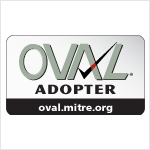Released: September 10, 2013
Vulnerability assessment for smartphones and tablets:
Based on data from the National Vulnerability Database (NVD), Apple iOS® is the operating system with the most security vulnerabilities in 2012, surpassing Windows® operating systems for the first time. Now, GFI LanGuard offers agent-less vulnerability assessment for all smartphones and tablets that connect to your Microsoft Exchange servers. Apple iOS, Google Android™ and Windows phones are supported.
Patch management for major Linux® distributions:
LanGuard 2014 is now a perfect fit for mixed environments because it allows automation of patching from a single console for the entire network, including Windows, Mac OS X® and major Linux distributions such as Red Hat Enterprise Linux, Ubuntu, Suse, CentOS and Debian.
New features in GFI LanGuard 2014
Released: September 10, 2013
Vulnerability assessment for smartphones and tablets:
Based on data from the National Vulnerability Database (NVD), Apple iOS® is the operating system with the most security vulnerabilities in 2012, surpassing Windows® operating systems for the first time. Now, GFI LanGuard offers agent-less vulnerability assessment for all smartphones and tablets that connect to your Microsoft Exchange servers. Apple iOS, Google Android™ and Windows phones are supported.
Patch management for major Linux® distributions:
LanGuard 2014 is now a perfect fit for mixed environments because it allows automation of patching from a single console for the entire network, including Windows, Mac OS X® and major Linux distributions such as Red Hat Enterprise Linux, Ubuntu, Suse, CentOS and Debian.
Patch management extended with 20+ new third party applications:
Keeping all your systems fully patched is now much easier that it used to be. GFI LanGuard 2014 includes automatic patch management support for a significant number of new third-party applications covering: instant messaging (Pidgin), utilities (CBBurnerXP, ImgBurn, Notepad++, CCleaner), media (VLC, Audacity), documents (LibreOffice), imaging (IrfanView, Paint.Net), online storage/backup (Google Drive, Mozy, Box), FTP clients (WinSCP, Core FTP) and Adobe Creative Suite (Photoshop, Illustrator and InDesign).

New features in GFI LanGuard 2012 SR1
Released: December 4, 2012
Mac OS patching support
GFI LanGuard now automates patching on Apple Mac OS X computers as well as Windows computers, all from the same console.
Enhanced compliance reporting
GFI LanGuard includes dedicated reports for additional compliance standards (Health Insurance Portability and Accountability Act (HIPAA), Public Services Network - Code of Connection (PSN CoCo), Sarbanes–Oxley Act (SOX), Gramm–Leach–Bliley Act (GLB/GLBA) as well as the Payment Card Industry Digital Security Standard (PCI-DSS).

What was new in GFI LanGuard 2012
Released: July 24, 2012
Relay agents
With relay agents, patching may be offloaded from the GFI LanGuard server to agents on machines designated as relays. These contain copies of the patches that were previously stored on the GFI LanGuard server. This is extremely effective in large networks and in multi-site networks where it is much faster to patch machines from a local relay agent than it would have been from a remote LanGuard server.
Microsoft® non-security patches
GFI LanGuard has long supported patches for Microsoft applications and operating systems, as well as for third-party applications. GFI LanGuard 2012 now also supports non-security patches for Microsoft operating systems and applications. (With third-party applications there has not traditionally been a distinction between the two types of patches, so we continue to support all patches for these applications). This means that there is no longer a need to run Microsoft WSUS to apply non-security patches. GFI LanGuard does it all.
Device vulnerability checks
GFI LanGuard can now detect vulnerabilities in the firmware of network devices such as printers, routers and switches, from popular manufacturers such as HP and Cisco. In total GFI LanGuard now checks for over 50,000 vulnerabilities on your network.
Smartphone and tablet identification
When auditing your network, GFI LanGuard can now identify iPhones, Android smartphones and iPads.
Latest platform support
Windows® 8 (beta version) is now supported – as usual GFI LanGuard is ahead of the curve regarding support for the latest Microsoft platforms.




